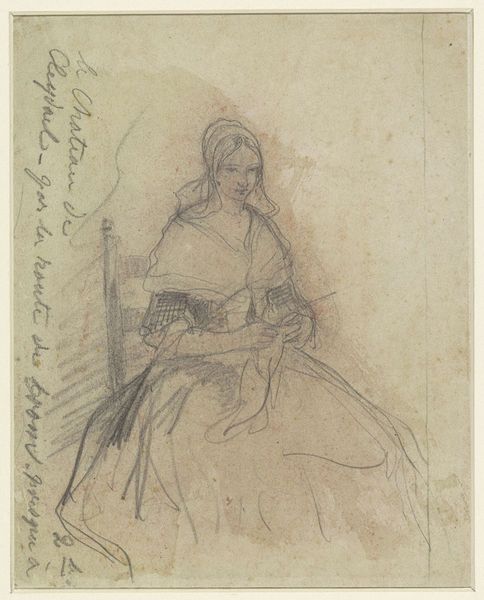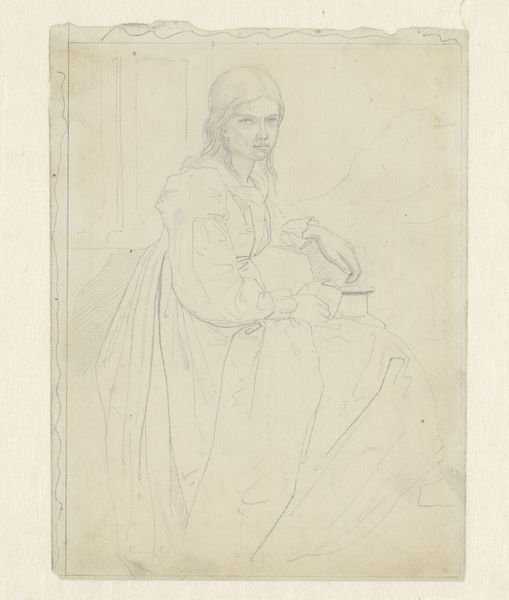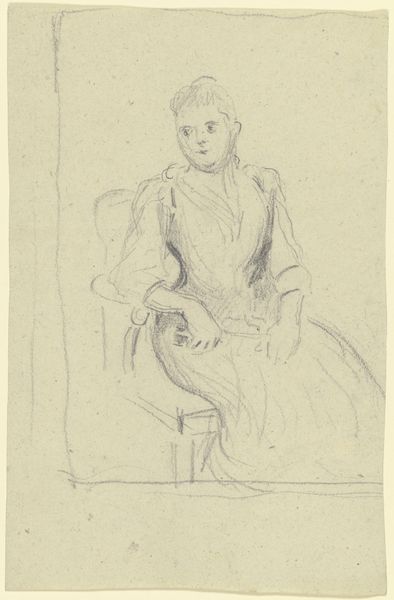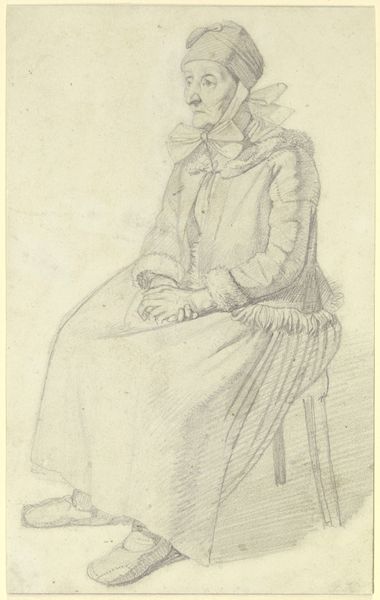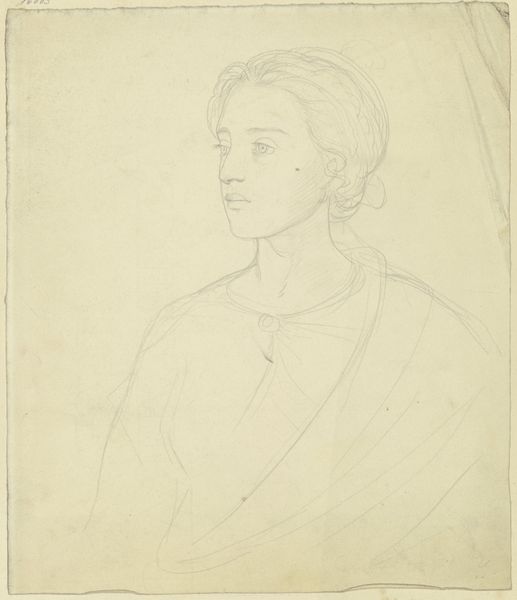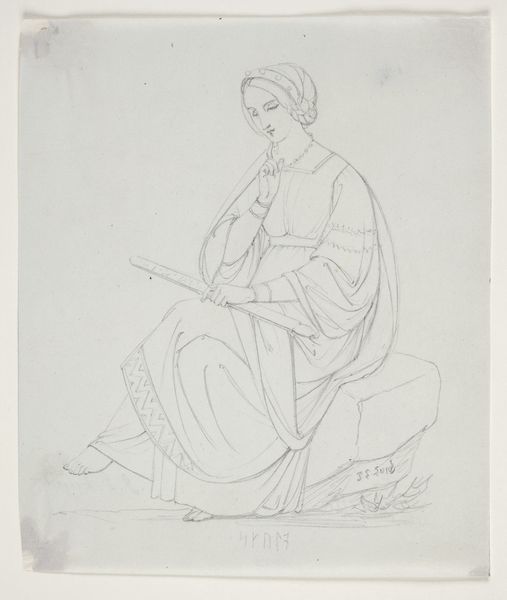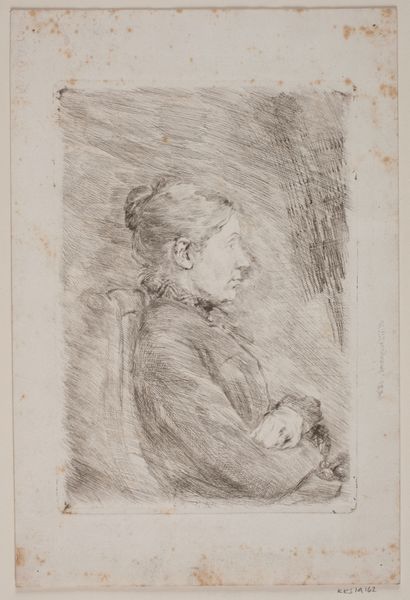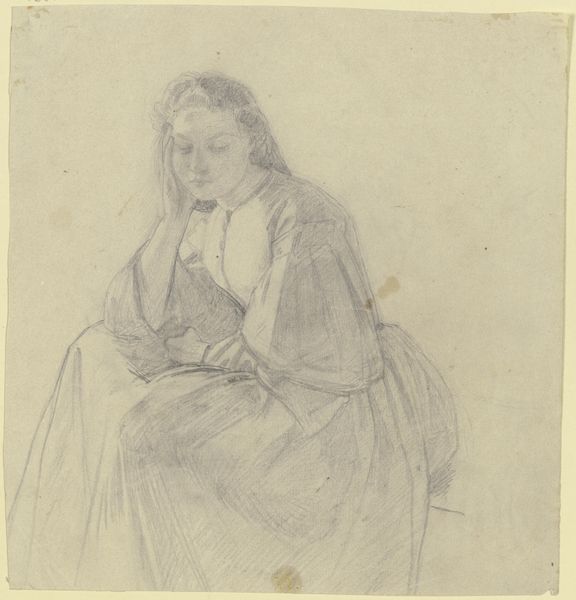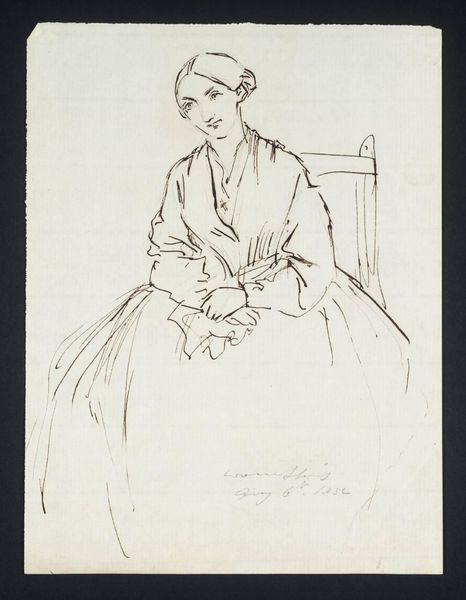
drawing, paper, pencil, graphite
#
portrait
#
drawing
#
light pencil work
#
pencil sketch
#
paper
#
personal sketchbook
#
idea generation sketch
#
sketchwork
#
ink drawing experimentation
#
pen-ink sketch
#
pencil
#
graphite
#
sketchbook drawing
#
storyboard and sketchbook work
#
sketchbook art
#
realism
Dimensions: height 169 mm, width 137 mm
Copyright: Rijks Museum: Open Domain
Editor: Here we have "Engelse rechter," or "English Judge," a pencil drawing from between 1819 and 1881 by Johannes Tavenraat, housed in the Rijksmuseum. It feels like a very immediate, almost candid portrait, especially with the inscription below the figure. What do you see in this piece? Curator: Well, let's consider what this image *tells* us, beyond just representing a man in judicial attire. The casual nature of the sketch, the personal handwriting accompanying it— these situate the work within a broader discourse about power and its representation. Who was Tavenraat, and what relationship did he have to this "English Judge?" Editor: I suppose I hadn't considered that it could be subversive, just seemed like a quick study. Curator: Exactly! And there is a political dimension at play. What did it *mean* to depict an English Judge in this way during that period? What socio-political tensions are present? We have to delve into questions about artistic license, social commentary, and even the artist’s own positioning in relation to these figures of authority. And what does that handwritten text contribute? Editor: So you're suggesting this might be less a neutral portrait and more a subtle critique of legal authority, framed within the context of its time? Curator: Precisely. Consider the historical context; what was the relationship between the Netherlands and England like during Tavenraat's time? How might that affect his portrayal of an English judge? Perhaps that informs the seemingly unfinished quality— a quiet form of protest through the seemingly simple act of sketching. Editor: That's a very different way to look at it than I initially thought. Thanks for illuminating all the potential cultural connections embedded within this drawing! Curator: Of course! It is imperative we consider what's missing to enhance our view of what's there.
Comments
No comments
Be the first to comment and join the conversation on the ultimate creative platform.
